
Concept explainers
(a)..
To find: The sketch for the graph of the function for which
(a)..
Answer to Problem 55E
The graph is shown in Figure 1 ..
Explanation of Solution
Consider that the function is defined for the limit but not the function is not defined at the point.
The definition of the limit shows that the limit is defined for only for the value of the function is same as the value of x approaches 2 from the left to the right.
Consider the following equation is,
The graph for the above equation is shown in Figure 1
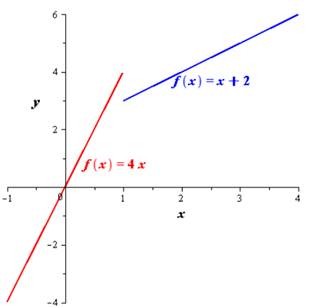
Figure 1
The discontinuity in the curve shows that the limit of the function is not defined at the point
(b)..
To find: The sketch for the graph of the function for which the limit of
(b)..
Answer to Problem 55E
The limit of the function is
Explanation of Solution
Consider the function is,
Press Y and key in the function the display is shown in Figure 2
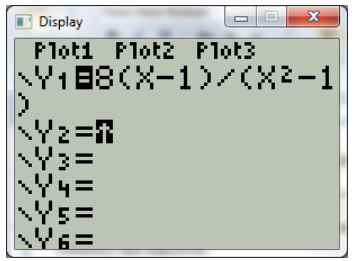
Figure 2
Now press the window button and choose the proper scale as shown in Figure 3
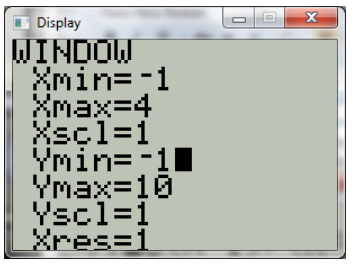
Figure 3
Press the graph button, the graph is shown in Figure 4
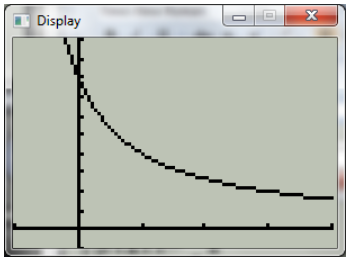
Figure 4
To verify if the function satisfy the given equation press the window button and select ask. The display is shown in Figure 5
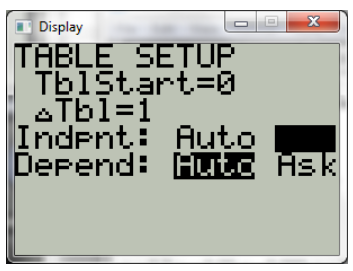
Figure 5
Press the 2nd graph and type in the value in the X column as shown in Figure 6
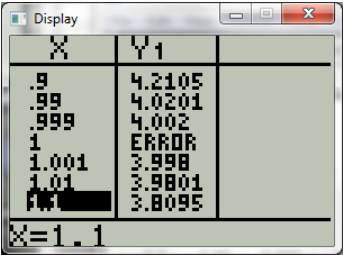
Figure 6
From the table,
Thus, the limit of the function is
Chapter 12 Solutions
Precalculus with Limits
- I circled the correct, could you explain using stokearrow_forwardUse Euler's method to numerically integrate dy dx -2x+12x² - 20x +8.5 from x=0 to x=4 with a step size of 0.5. The initial condition at x=0 is y=1. Recall that the exact solution is given by y = -0.5x+4x³- 10x² + 8.5x+1arrow_forwardFind an equation of the line tangent to the graph of f(x) = (5x-9)(x+4) at (2,6).arrow_forward
- Find the point on the graph of the given function at which the slope of the tangent line is the given slope. 2 f(x)=8x²+4x-7; slope of the tangent line = -3arrow_forwardUse the product rule to find the derivative of the following. p(y) (y¹ + y²) (6y¯³-10y¯4)arrow_forwardplease dont use chat gptarrow_forward
- Find this expression in frequency domain in a expression y(t), in time, that is.arrow_forwardplease dont use chat gptarrow_forwardQuestion Given the graph of f(z) below, find the graph of the derivative of f(z). Select the correct answer below: ° 7-6-5-4-3 123 ° ° 2 -7-6-5-4-3- 123 -° 2-4 -°- °- -7-6-5-4-3-2-1 1 5 +arrow_forward
 Calculus: Early TranscendentalsCalculusISBN:9781285741550Author:James StewartPublisher:Cengage Learning
Calculus: Early TranscendentalsCalculusISBN:9781285741550Author:James StewartPublisher:Cengage Learning Thomas' Calculus (14th Edition)CalculusISBN:9780134438986Author:Joel R. Hass, Christopher E. Heil, Maurice D. WeirPublisher:PEARSON
Thomas' Calculus (14th Edition)CalculusISBN:9780134438986Author:Joel R. Hass, Christopher E. Heil, Maurice D. WeirPublisher:PEARSON Calculus: Early Transcendentals (3rd Edition)CalculusISBN:9780134763644Author:William L. Briggs, Lyle Cochran, Bernard Gillett, Eric SchulzPublisher:PEARSON
Calculus: Early Transcendentals (3rd Edition)CalculusISBN:9780134763644Author:William L. Briggs, Lyle Cochran, Bernard Gillett, Eric SchulzPublisher:PEARSON Calculus: Early TranscendentalsCalculusISBN:9781319050740Author:Jon Rogawski, Colin Adams, Robert FranzosaPublisher:W. H. Freeman
Calculus: Early TranscendentalsCalculusISBN:9781319050740Author:Jon Rogawski, Colin Adams, Robert FranzosaPublisher:W. H. Freeman
 Calculus: Early Transcendental FunctionsCalculusISBN:9781337552516Author:Ron Larson, Bruce H. EdwardsPublisher:Cengage Learning
Calculus: Early Transcendental FunctionsCalculusISBN:9781337552516Author:Ron Larson, Bruce H. EdwardsPublisher:Cengage Learning





